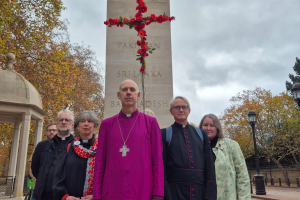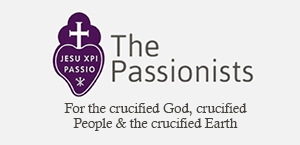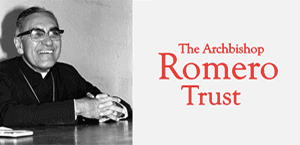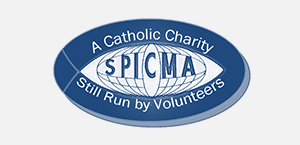Pope Leo designates St Mary's as Cathedral Church of Dublin

During Mass Archbishop Farrell holds up the Papal decree at St Mary's Cathedral. Image: CCO
Source: Irish Catholic Communications Office
Pope Leo has designated St Mary's as the Cathedral Church of the Archdiocese of Dublin. Archbishop Dermot Farrell announced the news today at the 12pm Mass in the Cathedral where he was the chief celebrant. The Mass was concelebrated by clergy from the Metropolitan Province Archdiocese of Dublin. The Archbishop's full homily text follows:
200 years ago today, on the Feast of Saint Laurence O'Toole, this church was dedicated. It was dedicated in a time when courage was required to conceive and undertake a project such as this. While we may rightly marvel at the Dublin Catholics of that time, with Catholic Emancipation still a few years away, we would do well not to miss the wood for the trees!
Today 200 years afterwards, it is with great joy that I am pleased to announce that the Holy Father, Pope Leo XIV, has consented to my request and has approved by decree that Saint Mary's be designated as the Cathedral Church of our Archdiocese. It is appropriate that this announcement should be made in the context of our celebration of the exemplary service which Saint Mary's has given to our diocese over 200 years, but also at a time when we are renewing our focus on our mission as a diocesan family, Building Hope and Proclaiming Good News, affirming the faith of our people, and reaching out to the city and beyond.
There is much that could be said about a cathedral, much of it romantic, or nostalgic, or coming from an idealised vision. But what might one actually say about a cathedral today, and what might one say about a Cathedral in Dublin today?
A Cathedral is a Place - a Place in the World… a Place in the City… a Place in Time
The first thing I think that is important today is that a Cathedral is a place, it is a special place, but still a place. People have prayed and expressed their faith in this place since the Middle Ages. "How awesome is this place!" says Jacob in the First Reading; "'Surely the Lord is in this place," he muses, "and I did not know it! This is none other than the house of God, and this is the gate of heaven." (Genesis 28:16-17). To say that there is something special about one place does not mean that there is not something special or unique in other places. In fact, it can be quite opposite: to see the uniqueness or even sacredness of one place opens our eyes to the sacredness and uniqueness of other places as well. To see the uniqueness and sacredness of one person is the threshold to seeing the uniqueness and sacredness of all. To see the Lord in this place - in the midst of our city and our lives - is to be open to God's call to perceive his presence among us in the complex mix of grace and sin that is our world. The idiom of our Christian faith is not either-or; Christian faith is both-and - Christ who is both God and man, all our stories are stories of gift and loss, of sin and grace, stories in time and beyond time. In the words of Saint John Paul II, "The Church is always a Church of the present time. We don't see our heritage as a treasure of bygone days, but as a powerful inspiration for moving forwards in the pilgrimage of faith on roads that are always new." (John Paul II, Homily in Rheims 22 September 1996).
A Cathedral is a Place a Place for People
A church is not only a place, built of bricks and mortar to keep the rain and wind out, but is a place that is alive: "like living stones, you yourselves are being built into a house in the Spirit," says the Second Reading [1 Peter 2:4-5]. This cathedral is not a museum or a monument, but a community of people. Through our Baptism, every person is part of "God's building," as Paul calls the Christian community in First Corinthians (1 Cor 3:9). This place is a place of people, and a place for people, and particularly a place for the Christian community. The community that gathers here witnesses profoundly to a church that is changing, and that is changing rapidly and profoundly. If we are honest, we must admit that much of this change is being forced upon us by a changing Ireland, and by a particular lack of vibrancy in the way we have come to live our faith. As always, there are at least two sides! What is crucial is how we understand where are, this crisis, as some might call it. It is possible to dismiss it, as if what we are living through were just another iteration of the trials and tribulations of the Church in every age, as if "the present crisis were primarily a matter of "ecclesiastical machinery and liturgical forms," to use the expression of one theologian, and failing to see that the ongoing crisis of the Church in the West, "is concerned with what the Church is in its depths, the encounter of God with humanity, in sin and in grace." (JM Cameron, "Jesus and the Church." Pages 149-162 in Daniel Callahan (ed.), God, Jesus, and Spirit (Geoffrey Chapman, 1969); here 154-55.)
To the extent that this cathedral is a place for people, it will be a place where the encounter of God and all God's children can happen, and be valued, celebrated, and proclaimed.
A Cathedral is a Place - a Place of Prayer
For that encounter to happen with depth and fruitfulness, this cathedral must be a place of prayer. Again we need an adequate vision of this. "Let there always be quiet, dark churches in which people can take refuge," wrote Thomas Merton. "Let there always be quiet, dark churches in which people can take refuge ... Houses of God filled with his silent presence. There, even when people do not know how to pray, at least they can be still and breathe easily." (Thomas Merton, "Learn to be Alone." Pages 80-83 in New Seeds of Contemplation (New Directions, 1961); here 82).
My prayer is that that this cathedral will continue to be a place that offers sanctuary - somewhere that fosters and shelters personal prayer and reflection, a place of encounter with the person of Jesus makes us who we are, and shapes what we do, how we live. Being at the service of this encounter is the heart of the mission of the Church. And a place of prayer is ultimately a place of peace. May this Cathedral be a place of peace for all who cross its threshold.
Saint Mary's Cathedral a Place of the Poor
The location of this cathedral puts it close to situations of poverty. For its many challenges this is a huge blessing. Of all who come here, it is most of all to the poor that this place belongs. The Cathedral in the centre of the city has a prophetic value given that Dublin is undergoing rapid transformation and with the transformation comes dislocation and the potential for conflict over priorities and resources - as recent disturbances have shown. Traditional inner-city communities are literally overshadowed by rapid commercial development, while the streets of the city centre bear witness to the extent of homelessness and addiction. We need to make a distinction between poverty and the poor. Poverty is a societal evil, but the poor are our sisters and brothers. In our poverty, we are sisters and brothers of the poor Christ - the one who was rich and became poor for our sakes. For the person of faith, "the poor are not a sociological category, but the very 'flesh' of Christ." …. "No Christian can regard the poor simply as a societal problem; they are part of our 'family.' They are 'one of us,'" as Pope Leo underlines in Delixi Te (110 and 104).
A Cathedral is a Place - a Place of Proclamation and Presence
Above all, this is a place of proclamation and presence. It is a place where Christ the Good Shepherd is preached, and where his presence among his flock - among us - is celebrated, where the Lord not only gathers his people, but where his flock is nourished and nurtured. Without Christ what is this place? Europe is filled with magnificent cathedrals and exquisite churches, but without "the one sent good as news to the poor" (Luke 4:18; cf. Isaiah 61:1-2), what are they? Without him, what are we? Without him who is God among us, the face and embrace of the God who waits for all his children, and "who sees us from afar" (Luke 15:20), those exquisite locations remain witnesses to dynamic faith and a confident Church of another age; for all their magnificence, they are but monuments to a God who - in the words of the late Dennis O'Driscoll - a God who is "missed." (see his "Missing God" in Exemplary Damages [Anvil Press Poetry, 2002]). But a real cathedral is something else! A living cathedral a place where the Shepherd, is alive, and his presence and care are celebrated. With the strong liturgical tradition in this place - I think in particular of the wonderful contribution of the Palestrina Choir and all those in sacramental ministry - may Saint Mary's continue to serve both its local parish community and its wider diocesan mission, in new ways and with renewed vigour.
A Place of Peace, Gentleness and Hope
This cathedral is under the patronage of Mary, she who welcomed the message of the angel, who could say, "Be it done onto me according to your word" (Luke 1:38), and who had the confidence in her son to say, "Do as he tells you ..." (John 2:6). May Mary's faith, her trust in the Lord, her openness to the work of God among God's people, touch and inspire all who enter this place.
"'Surely the Lord is in this place," said Jacob, "and I did not know it! This is none other than the house of God, and this is the gate of heaven." Jacob called the place Beth-el - the house of God. (Genesis 28:16-17, 19). May this house of God, this cathedral, be a place where the presence of the Lord draws near - for each of us, and for the people of our city, a place of peace, of blessing, a place of gentleness, a place of holiness and hope.
Mary, mother of the Church, pray for us.
Saint Laurence O'Toole, pray for us.
Saint Kevin, pray for us.


















